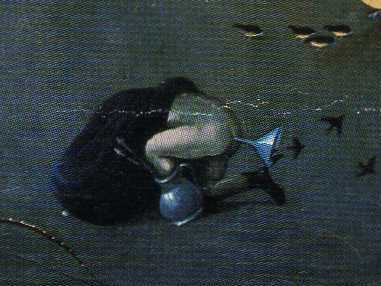Having finished A New Kind of Christian, the next “book that ‘normal’ people read” I’m going through is Michael Green’s 1981 volume, I Believe in Satan’s Downfall (from the ‘I Believe’ series). Obviously not a book that normal people read anymore, but I hope that some normal people read it in the 80s, because it is very good so far.
I have just finished Green’s chapter about temptation, and I am reminded of the awkward conversations I would have about demonology when I was researching John Cassian (d. c. 435). Specifically, the lack of any Frank Peretti, This Present Darkness or The Oath business. Cassian acknowledges this sort of demonology, but he is not going to spend time on it.
It’s a bit disappointing for the sensationalists. Why tantalise us with the idea of demons who wait at crossroads to mug people if you aren’t going to give us any details? Other stories from the Desert Fathers give us great details! I forget the source, but there’s this one time that a guy took shelter in an old tomb, and a bunch of demons turned up, and he overheard them talking about all the monks they tempted. Or there are the temptations of St Antony, wherein he wrestled with the denizens of Hell all night:
Including Funnel Butt:
John of Ephesus tells the story of some demons who made a woman levitate and appear like the BVM and fool some monks into praying to her.
Cassian doesn’t deny the reality of such things. After all, they say that The Exorcist is based on real events. But these sensationalist stories are not his main event.
Cassian’s demonology is all about temptation. How do the demons tempt you to sin? How do they try to distract you from prayer? What sorts of thoughts do they encourage? How much power do they have in terms of temptation? Can they implant an idea in your mind? Can demons really see the future?
Let me tell you, when you follow, ‘I study demonology,’ with, ‘specifically how demons tempt people to sin,’ your rocketing coolness plummets.
But the un-sexy demonology of John Cassian is just the demonology we need. I remember this scene in This Present Darkness (the aforementioned Peretti novel) where some dude is literally wrestling with demons in his living room. Let me tell you — you probably do wrestle with demons in your living room.
The demon of wrath.
The demon of greed.
The demon of gluttony.
The demon of laziness.
The demons of gossip and slander.
The demon of saying that malicious thing.
And so on.
Our passions are disordered, and the demonic prey on that. Their main goal, though, as Cassian’s Conferences would tell us, and which is, I believe, the lesson from St Antony’s battle with Funnel Butt, is to keep us from prayer. Watch out, then, for
The demon of distraction.
He comes clothed as a Netflix of Light.


